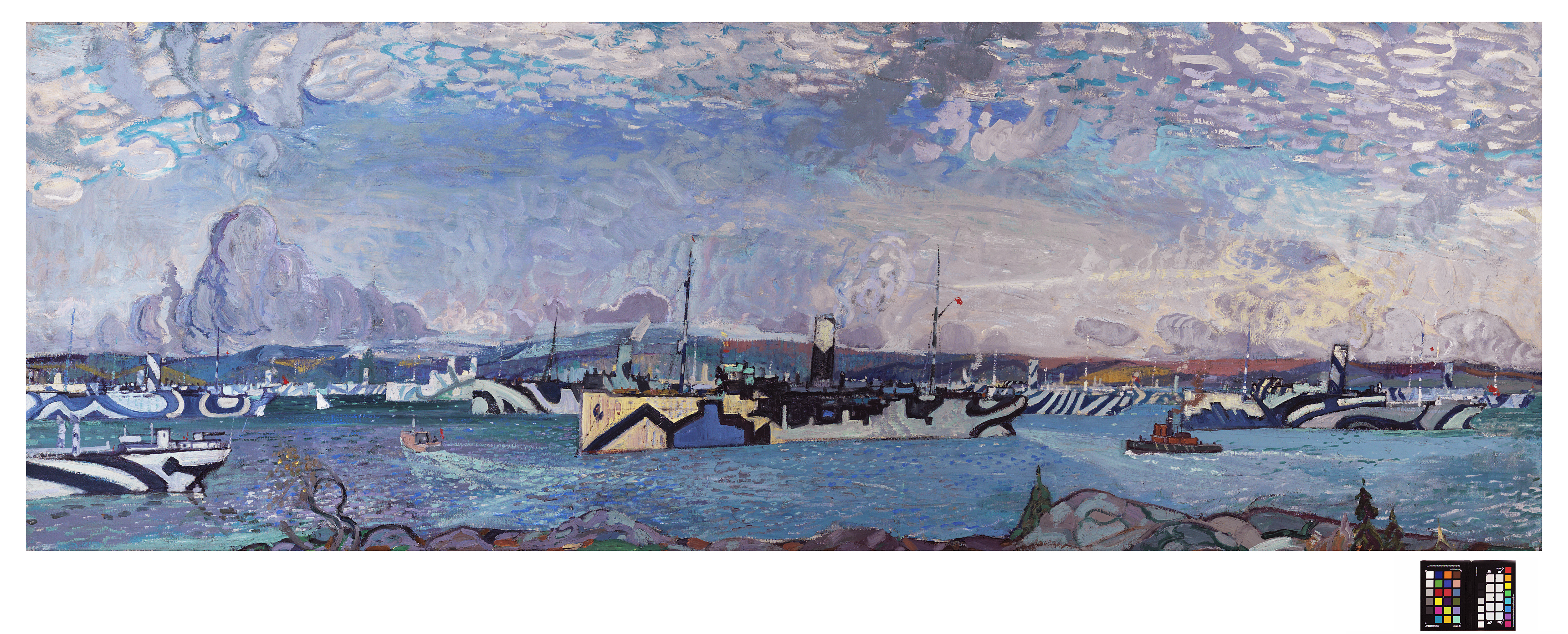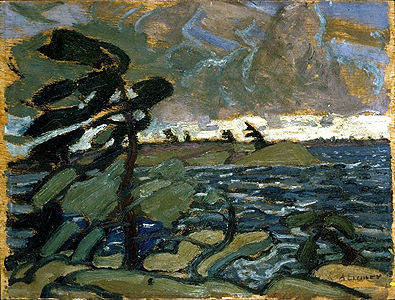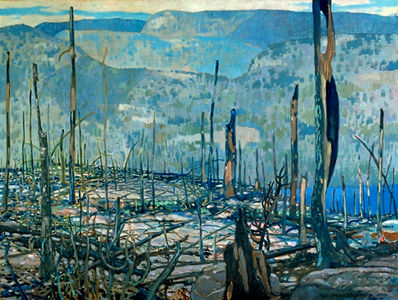Arthur Lismer, painter, educator (born 27 June 1885 in Sheffield, England; died 23 March 1969 in Montreal, QC). Arthur Lismer was one of the founders of the Group of Seven and a crucial figure in the development of arts education in Canada.
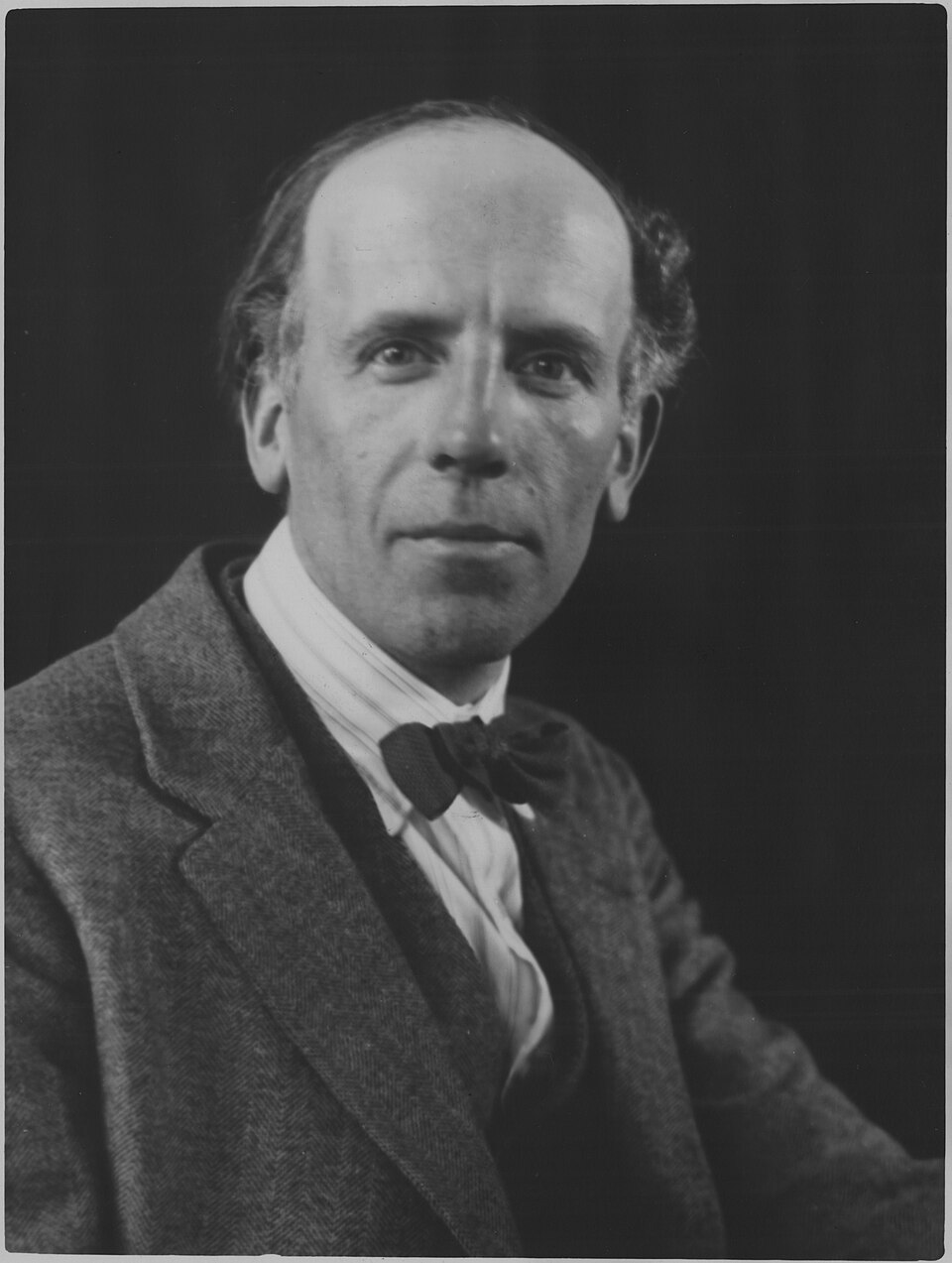
Education and Early Career
Arthur Lismer studied at Sheffield School of Art 1899–1906 and the Académie royale des beaux-arts, Antwerp, 1906–07. He moved to Canada in 1911, seeking work as a commercial illustrator. At the Grip Engraving Co. in Toronto, he met J.E.H. MacDonald, Tom Thomson and F. H. Johnston, and, shortly thereafter, Franklin Carmichael.
In 1912 he returned to England to marry and spoke so highly of Canada that F. H. Varley followed him to Toronto. Lismer began his distinguished career as an art educator as principal of the Victoria School of Art and Design (later Nova Scotia College of Art and Design) in Halifax 1916–19.
A prodigious worker, he painted views of Halifax harbour and returning troopships in 1918–19, towards the end of the First World War. Lismer was commissioned as a war artist through the Canadian War Memorials Fund, an outgrowth of the Canadian War Records Office. (See Canadian War Art Programs.) He also made sketches of the wreckage created by the Halifax Explosion.
Lismer returned to Toronto to become vice-president of the Ontario College of Art and Design (now the Ontario College of Art and Design University) in 1919 and in 1920 became a founding member of the Group of Seven.
Mature Work
Lismer's first Canadian paintings were heavily influenced by the 19th century British landscape painter John Constable, French Barbizon school artists like Jean-François Millet, and post-impressionist Belgian painters. During the 1920s, however, he developed a powerful expressionist style of his own, characterized by raw colour, heavy impasto, deliberately coarse brushwork and compressed simplified forms. In A September Gale, Georgian Bay (1921), for instance, there is a simple, swaying tree in the foreground rendered in earthy reds, the water a rhythmic pattern of whitecaps, the sky roiling with clouds. October on the North Shore, Lake Superior (1927), on the other hand, is a slightly elevated view of lake islands painted in thick earth tones, the water a subtly rippled blue-green, the sky a horizontal sweep of heavy — and also earth-toned — clouds.
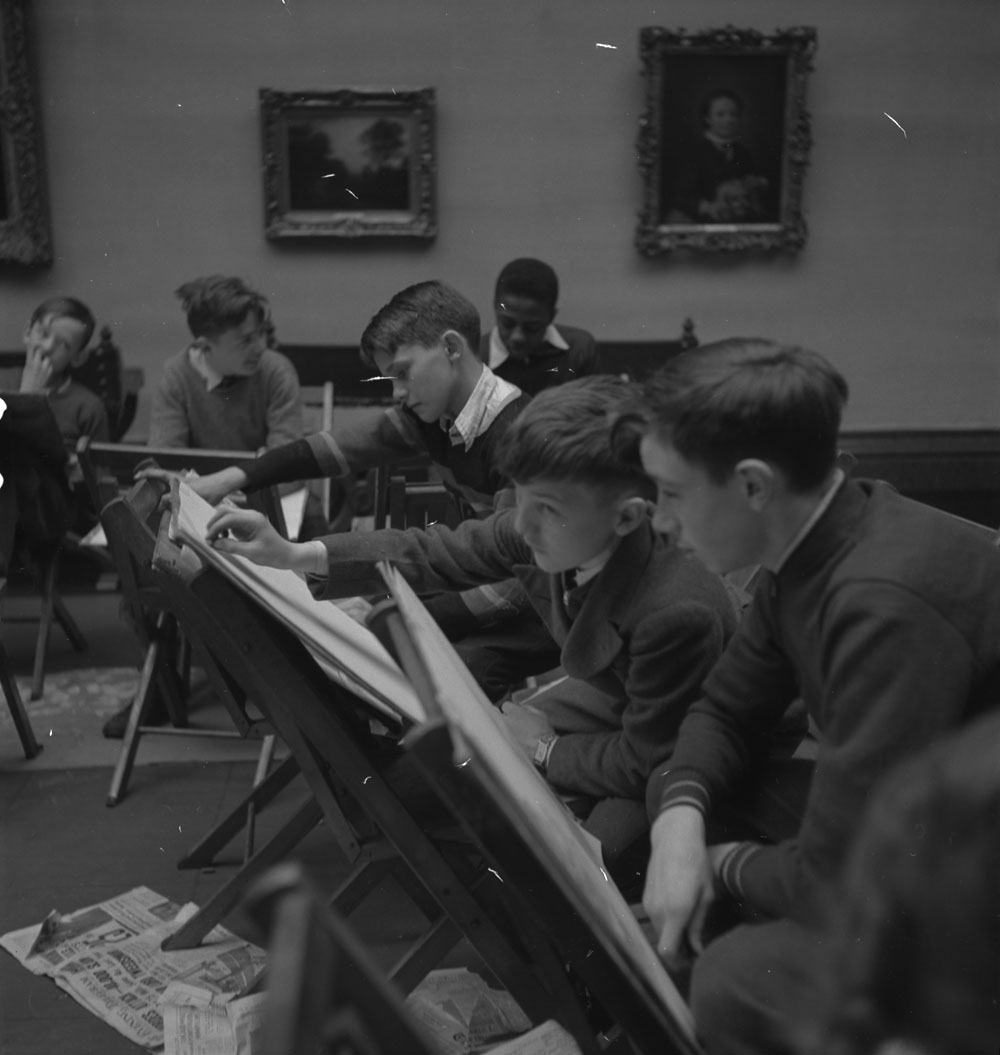
Teaching
While an accomplished painter, Lismer devoted most of his time to art education. From 1927 to 1938 he was the educational supervisor at the Art Gallery of Toronto (now the Art Gallery of Ontario). In 1932, he undertook a nationwide lecture tour; invitations to conferences in Europe and South Africa followed, and he returned to teach in South Africa in 1936-37.
In 1938, he was visiting professor at Teachers College, Columbia University. He ran the Montreal Children's Art Centre, affiliated with the Montreal Museum of Fine Arts from 1941 to 1967. This activity left Lismer with little time to paint, but he produced many of his most original works after 1930, painting first in the Maritimes and Georgian Bay, and from 1951 at Long Beach, on Vancouver Island, each summer. The lurid, intestinal and claustrophobic qualities of many of these paintings were not to contemporary taste, but have gained acceptance in recent years, for they seem to have developed from a form of deep, personal expressionism.

 Share on Facebook
Share on Facebook Share on X
Share on X Share by Email
Share by Email Share on Google Classroom
Share on Google Classroom

